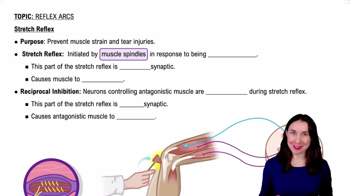Here are the essential concepts you must grasp in order to answer the question correctly.
Inflation Reflex
The inflation reflex, also known as the Hering-Breuer reflex, is a protective mechanism that prevents overinflation of the lungs. It is initiated when stretch receptors in the lungs detect excessive expansion, sending signals to the brain to inhibit further inhalation. This reflex helps maintain optimal lung function and prevents damage from overdistension.
Recommended video:
Ventral Respiratory Group (VRG)
The ventral respiratory group is a cluster of neurons located in the medulla oblongata that plays a crucial role in regulating the rhythm of breathing. It primarily controls the motor neurons that innervate the diaphragm and intercostal muscles, facilitating inhalation and exhalation. While it is involved in respiratory control, it is not directly responsible for initiating the inflation reflex.
Recommended video:
Pontine Respiratory Centers
The pontine respiratory centers, located in the pons of the brainstem, modulate the activity of the medullary respiratory centers to fine-tune breathing patterns. They help regulate the transition between inhalation and exhalation and can influence the depth and rate of breathing. However, they do not directly initiate the inflation reflex, which is primarily triggered by lung overinflation.
Recommended video:
 Verified step by step guidance
Verified step by step guidance


